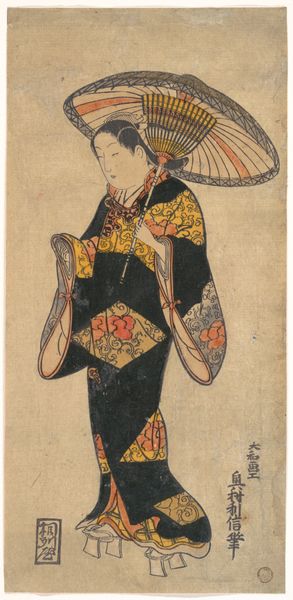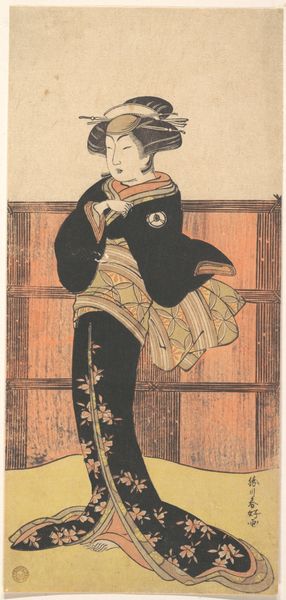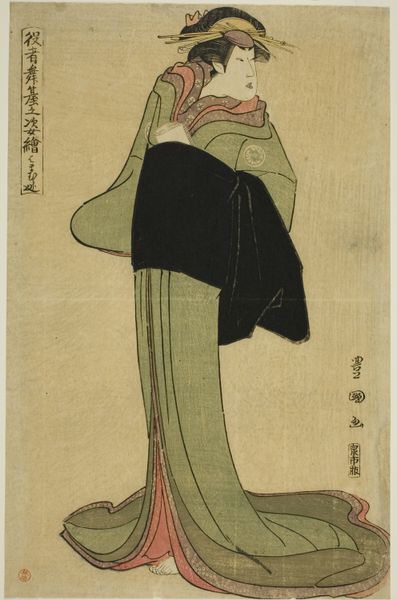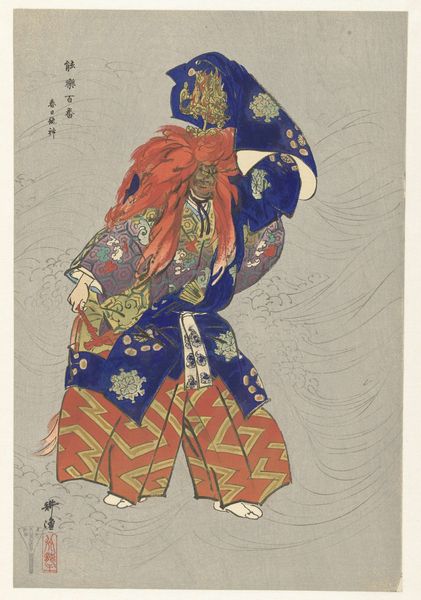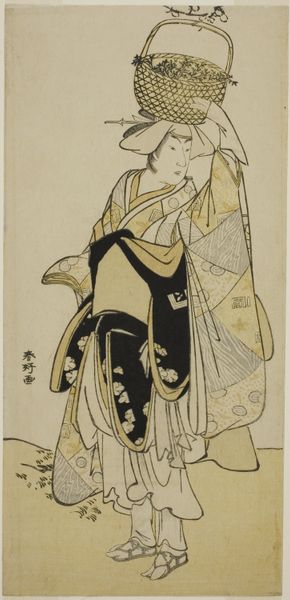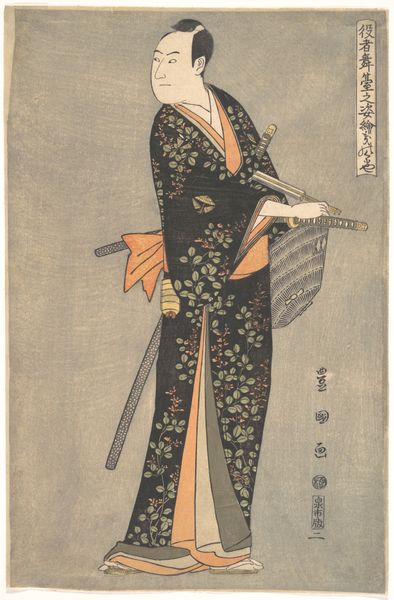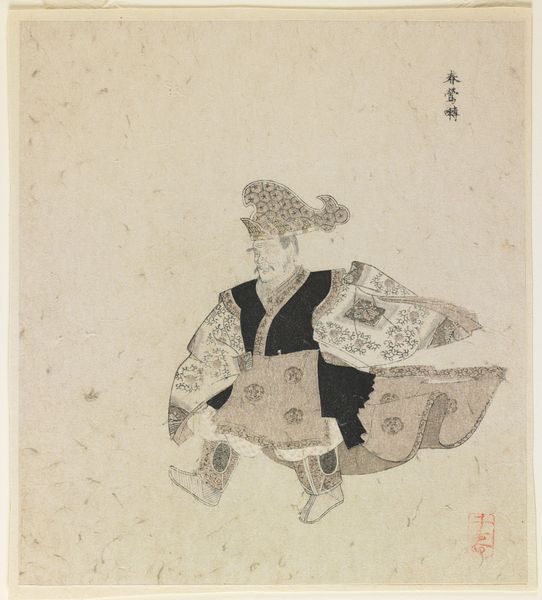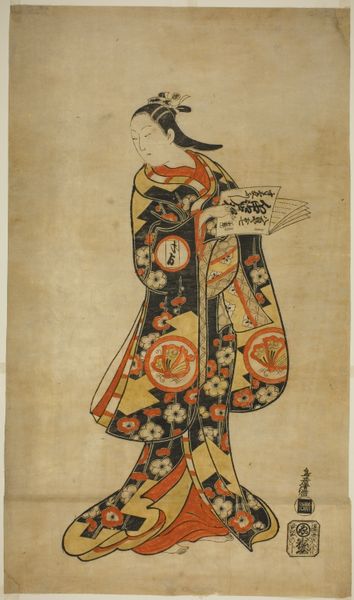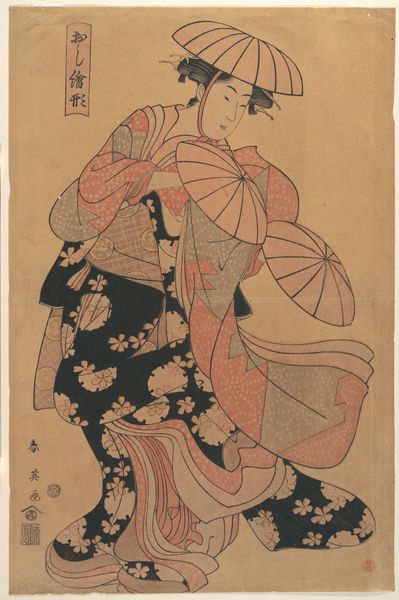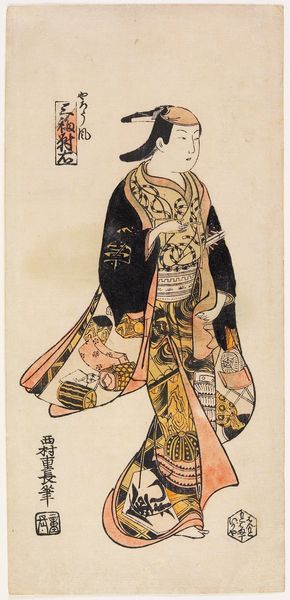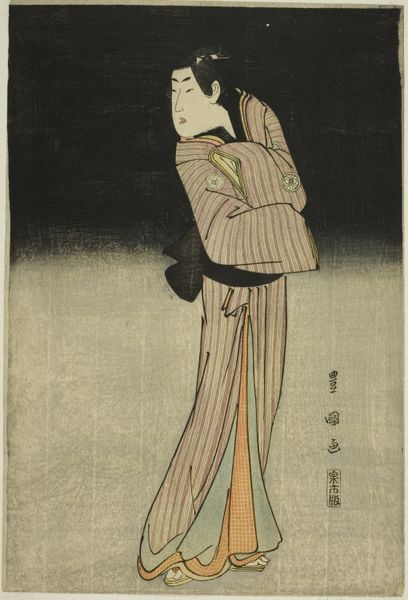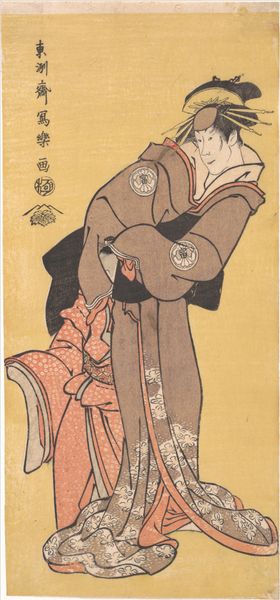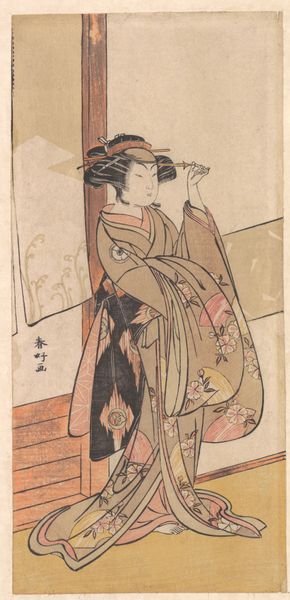
The Actor Nakamura Riko I as Lady Manko (Manko Gozen) (?) in the Play Soga Musume Choja (?), Performed at the Nakamura Theater (?) in the First Month, 1784 (?) c. 1784
0:00
0:00
#
toned paper
#
childish illustration
#
cartoon like
# print
#
asian-art
#
caricature
#
japan
#
handmade artwork painting
#
spray can art
#
watercolour illustration
#
cartoon style
#
cartoon carciture
#
watercolor
Dimensions: 32.5 × 14.8 cm (12 13/16 × 5 13/16 in.)
Copyright: Public Domain
Editor: So this print, dating back to around 1784, is by Katsukawa Shunshō. It depicts the actor Nakamura Riko I in the role of Lady Manko. The materiality of it is really interesting; you can really see the layering of the woodblock printing. How do you approach something like this? Curator: First, consider the physical labor embedded within its production. Each line, each color, results from the careful carving and pressing of wood. Think about the system supporting this: who sourced the wood? What tools did the artisans use? Consider too the hierarchies inherent in the production, the master artist, versus the often anonymous carvers and printers. Editor: That's a perspective I hadn't fully considered! How does that relate to the social context? Curator: Well, these prints, particularly those of actors, became a commodity. Ukiyo-e, these "pictures of the floating world," catered to a burgeoning merchant class with disposable income. They were buying not just images but access, in a way, to the glamorous world of the Kabuki theatre, and the actors themselves. Consider the cost of this print relative to daily wages. Editor: So, the print becomes a sort of consumable object, reflecting social aspirations. Does focusing on these material conditions change how we see the artistic intent? Curator: I think it enriches it. By understanding the labor, materials, and market forces, we ground the artistic vision within a tangible reality. The beauty is no longer just aesthetic; it's tied to the social fabric of Edo-period Japan. How has your view shifted after this discussion? Editor: It really helps me move beyond simply appreciating the visual to understanding the cultural machine behind its production. The means of production aren't just secondary; they are part of the story. Curator: Precisely. Recognizing these layers reveals the depth and complexity inherent in even seemingly simple works like this.
Comments
No comments
Be the first to comment and join the conversation on the ultimate creative platform.
